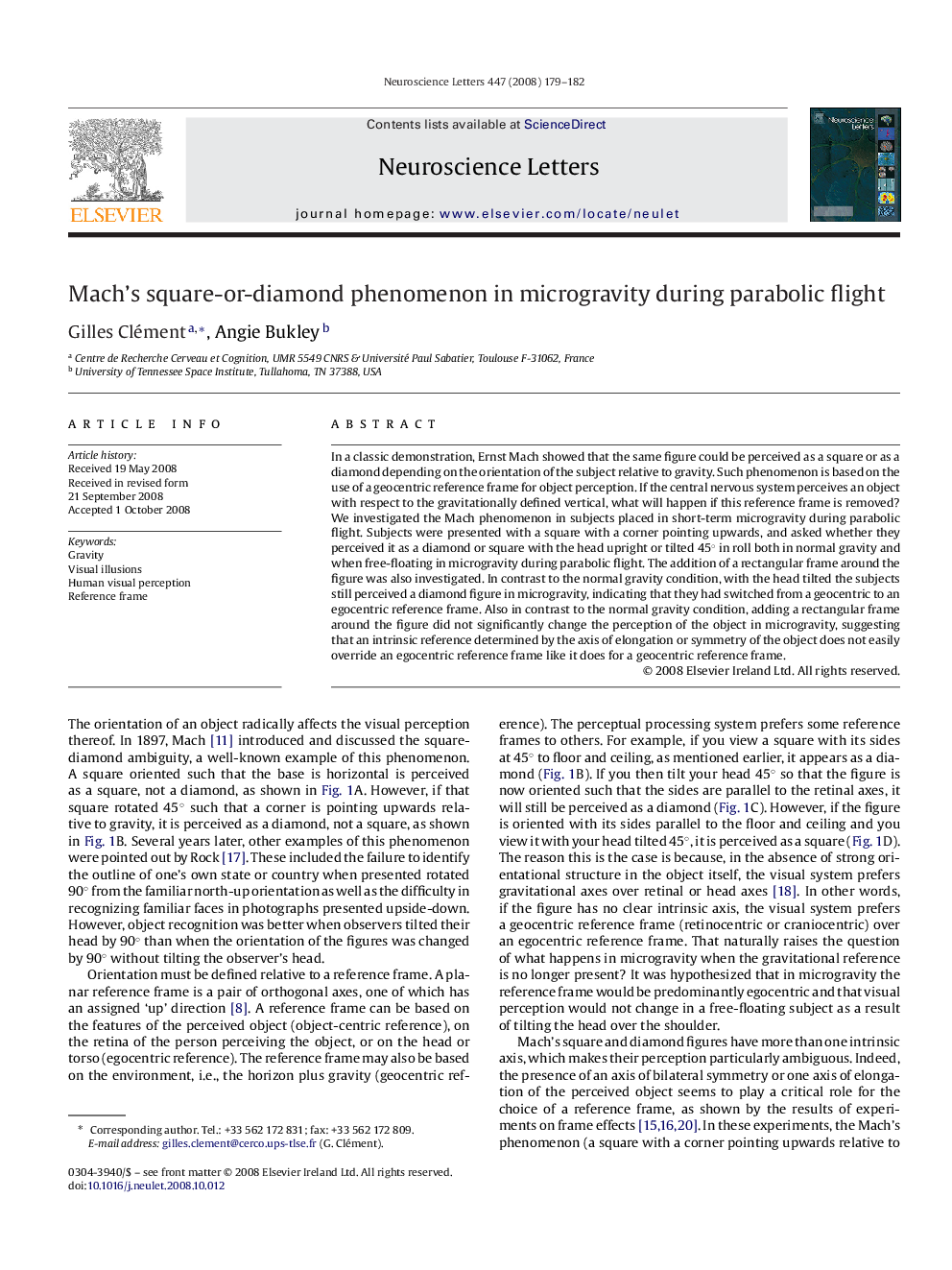| Article ID | Journal | Published Year | Pages | File Type |
|---|---|---|---|---|
| 6285744 | Neuroscience Letters | 2008 | 4 Pages |
Abstract
In a classic demonstration, Ernst Mach showed that the same figure could be perceived as a square or as a diamond depending on the orientation of the subject relative to gravity. Such phenomenon is based on the use of a geocentric reference frame for object perception. If the central nervous system perceives an object with respect to the gravitationally defined vertical, what will happen if this reference frame is removed? We investigated the Mach phenomenon in subjects placed in short-term microgravity during parabolic flight. Subjects were presented with a square with a corner pointing upwards, and asked whether they perceived it as a diamond or square with the head upright or tilted 45° in roll both in normal gravity and when free-floating in microgravity during parabolic flight. The addition of a rectangular frame around the figure was also investigated. In contrast to the normal gravity condition, with the head tilted the subjects still perceived a diamond figure in microgravity, indicating that they had switched from a geocentric to an egocentric reference frame. Also in contrast to the normal gravity condition, adding a rectangular frame around the figure did not significantly change the perception of the object in microgravity, suggesting that an intrinsic reference determined by the axis of elongation or symmetry of the object does not easily override an egocentric reference frame like it does for a geocentric reference frame.
Related Topics
Life Sciences
Neuroscience
Neuroscience (General)
Authors
Gilles Clément, Angie Bukley,
